We sincerely hope that you thoroughly enjoy reading and learning from this article about 6 Extremely Rare Herbaceous Plants. Flora such as these natural beauties, whether they be rare or not, remain some of the most distinctive on earth.
Some are ranked as such for their beauty, while for others its for their unique qualities. Wherever they appear, species such as these never cease to amaze those who encounter them. We hope that these few inspire you to lean of more.
Mount Ranier Lousewort
Mount Ranier Lousewort Facts
- Leading off this article about 6 Extremely Rare Herbaceous Plants comes the amazing species approprtiately known as the Mount Ranier Lousewort.
- This delicate marvel of Nature bears the informative, if less than verbally appealing, common name for fully justified reasons. The formal scientific name for this amazing Angiosperm, however, is the tongue-twisting term of Pedicularis rainierensis.
- The beautiful species received its technical name due to the efforts of the American researchers Francis Whittier Pennell and Fred Adelbert Warren. This team of dedicated researchers made the first formal recognition of it as a separate and distinct species.
- For the moment, the IUCN has no listing for the flowering plant. Any such listing would appear on the organizations’ published Red List of Threatened Species. That lack of listing occurs, in part, due to a lack of sufficient information about the plant.
- The government of the region in which it appears, however, does currently have a listing for its status. That governing body presently lists the Mount Ranier Lousewort as Sensitive. It earns that status due to its relative vulnerability to local factors.
- That’s because, in its native range, it’s especially vulnerable to the actions of man. It’s often trampled by campers and hikers, who favor its native area. It’s also vulnerable to grazing by elks and marmots. Many people also collect specimens, due to its appeal.
- This work of evolution nevertheless faces the same dangers as other species throughout the world. These consist of the dual threats of habitat loss and climate change. The nature of its range further augments its vulnerability to both of these factors.
Mount Ranier Physical Description
The marvelous Mount Ranier Lousewort possesses several attributes that make it stand out in the minds of those who encounter it. Sheer physical size, however, isn’t among them. That’s due to the fact that, for all its loveliness, this Angiosperm remains small.
More precisely, individual specimens attain a maximum known height of only about 16 in (40.6 cm). Conversely, though, mature plants rarely attain heights measuring less than 6 in (15.25 cm). Most individuals, in fact, measure roughly in the middle of that range.
Each delicate plant typically produces several thin, mainly hairless stalks. Each of these in turn develops several stems, along which its pinnate leaves protrude. These average roughly 2 – 6 in (5 – 15 cm) in length. This foliage further averages about 1.2 in (3 cm) in width.
Each dazzling bloom of the Mount Ranier Lousewort, furthermore, produces its own wonders. These include a short, spike-like raceme atop the stem. These are further surrounded by 5 delicate petals. These features also generally manifest a bright yellow shade.
This work of Nature produces its fruit within relatively small, hairless capsules. These typically develop in a flattened and asymmetrical shape. Most commonly, these structures contain several seeds. Those usually manifest a unique, slightly wing-shaped design.
- Kingdom: Plantae
- Phylum: Angiosperms
- Class: Eudicots
- Order: Lamiales
- Family: Orobanchaceae
- Genus: Pedicularis
- Species: P. ranierensis
Mount Ranier Lousewort Distribution, Habitat, and Ecology
Quite sadly, the gorgeous Mount Ranier Lousewort appears to have evolved as endemic to a highly restricted zone of habitation. In fact, it appears in an extremely tiny section of the globe. That’s a portion of the region now known as the continent of North America.
Yet, even there this wonder of Nature only appears within a very narrow range of the continent. It further makes its home in the northwestern portion of the United States. There, it appears solely on and around the magnificent Mount Ranier, as the name hints at.
It therefore understandably principally inhabits an alpine environment. Smaller percentages of its population, however, make their home in nearby sub-alpine areas. Virtually all known specimens coincidentally appear within the boundaries of the Mount Ranier National Park.
Within that range, however, the plant appears to be moderately adaptible in its choice of specific ecosystems. That’s because across this limited range, it appears in several types of area. These include regions of rocky slopes, coniferous forests, and moist meadows.
These further most frequently themselves appear in close proximity to streams or lake basins. It also seems to require a very specific, and small, range of altitudes. Due to this, all known concentrations appear at altitudes between 4,800 – 6,800 ft (1,400 – 2,100 m).
Mount Ranier Lousewort, however, displays an impressive flexibility in terms of its soil requirements. That’s due to the fact that it performs equally well in different types of soil. These include regions of moist talus, spots of deep loam, and even areas of gravelly slopes.
Kurinji
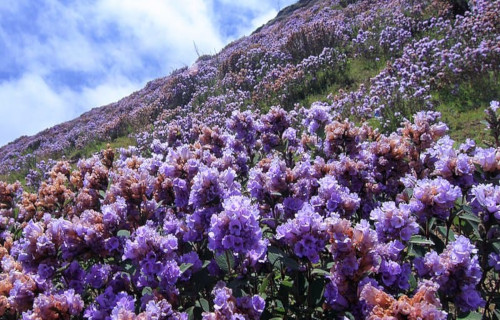
CCL: http://bit.ly/2zBWbKi
Kurinji Facts
- Appearing next among these selections for inclusion in this compilation of 6 Extremely Rare Herbaceous Plants is the Kurinji.
- Firstly, the stunning plant obviously has an amazing story to tell those who are willing to listen. Yet sadly, the plant also has a quite limited zone of habitation. However, this was not always the case for this incredibly beautiful plant.
- Moreover, this breathtaking species evolved as what science calls generally a plietesial. This somewhat complex term simply means that it developed into a long interval bloomer. In fact, the species only blooms once every 12 years.
- Further, related species have bloom rates of every seven years. Although this characteristic is amazing, the genetic trait appears in about 250 species in the genus. But sadly, once the magnificent plant blooms, it has reached the end of its life.
- The IUCN lists the beautiful Kurinji as Endangered, on its Red List. This could change for the worse in the near future. Unfortunately, only a portion of its quite tiny area enjoys protection. That’s true since it forms part of a sanctuary.
- Of all known long interval species, the Kurinji has been the most studied. Because of its fascinating lifecycle, the Strobilanthes kunthiana, as it’s known to researchers, has been used by the local inhabitants as a way to mark their ages.
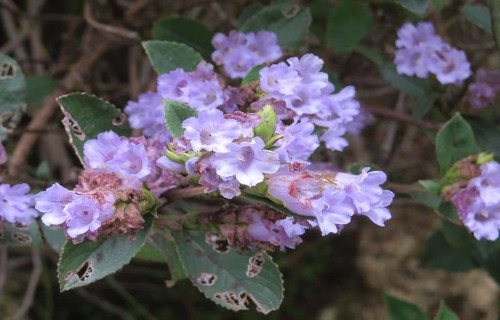
CCL: htp://bit.ly/2zBWbKi
Kurinji Physical Description
Notably, the Kurinji bears the classification of a shrub. But, the plant remains a relatively small example of one, compared to related species. That’s because most specimens of the shrub only reach a height ranging from 12-24 in (30-60 cm) in the wild.
As is easily apparent, the beauty of the plant comes largely from its stunning blooms. In addition, these magnificent yet delicate flowers usually appear in comparatively small clusters. In color, these blooms present a very specific range of colors.
This range of coloration most commonly consists of light to dark shades of the color purple. These delicate flowers also average about 1 in (2.5 cm) in length. In addition, the stalks of the magnificent Kurinji evolved a distinctly different trait of their own.
This statements stands on its own merit, since these display a reddish color, combined with a surprisingly smooth texture. In contrast, however, its leaves have a leathery texture and dark green color. Generally, these measure about 1.18 – 3.36 in (3 x 6 cm).
- Kingdom: Plantae
- Phylum: Angiosperms
- Class: Eudicots
- Order: Lamiales
- Family: Acanthaceae
- Genus: Strobilanthes
- Species: S. kunthiana
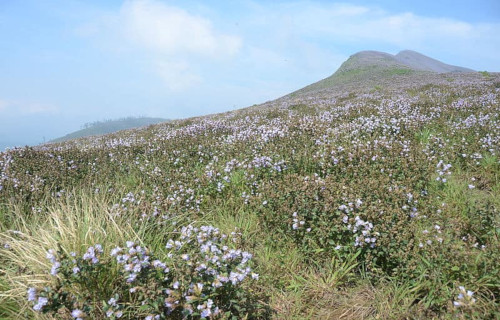
CCL: http://bit.ly/2zBWbKi
Kurinji Distribution, Habitat, and Ecology
Evolution provided the Kurinji with a restricted range of habitation. That holds true due to the fact that it apparently evolved solely as native to the country of India, in Asia. No evidence exists to support the possibility of it ever appearing anywhere else.
Even within this territory, the range of this Angiosperm has now become severely limited. As a result, the great majority of known specimens presently appear in the Western Ghats. Nevertheless, a small number of plants also exist in the Eastern Ghats, as well.
And once again, Nature gave the visually stunning plant known as the Kurinji yet another highly specific requirement for its flourishing. That remains true since it most commonly grows at high altitudes, ranging from 4,265 -7,874 ft (1,300 – 2,400 m).
In addition, this work of evolution also has one more surprise for us. It nearly always appears on the sides of gently sloping hills within that range. Unfortunately, mankind has now taken away the great majority of its potential habitat in its range.
That’s true given the fact that the majority of the habitat remaining to it is now covered with numerous residences and plantations. In point of fact, only the Kurinjimala Sanctuary, which covers a scant 12.3 sq mi (32 sq km) offers the species secure protection.
Hawaiian White Hibiscus
Hawaiian White Hibiscus Facts
- The beautiful plant named the Hawaiian White Hibiscus places third on this list of 6 Extremely Rare Herbaceous Plants, but only due to random selection.
- Firstly, the truly stunning and impressive flora represents yet another rare plant species native to a small geographic range. Quite sadly, the gorgeous species currently appears to exist on only two islands.
- Secondly, however, even in these locations, this dazzling beauty exists only within a highly specific habitat type. Unfortunately, this fact also renders it highly vulnerable to multiple ongoing threats to its existence.
- These primarily include, but are not limited to habitat loss and, of course, the ever-accelerating effects of climate change. Further, the habitat loss comes largely in the form of man’s use of its habitat for the construction of homes.
Hawaiian White Hibiscus Physical Description
Most notably, the stunningly beautiful Hawaiian White Hibiscus holds a remarkable ability. That’s due to the fact that it actually has the ability to grow in either of two forms. As a result of this ability, it develops as either a small tree or shrub.
This places it, much like the equally amazing Devil’s Walking Stick among the few plants with this versatility. Furthermore, in height, it averages between 15-20 ft (4.6-6.1 m). However, exceptional individuals sometimes reach as much as 30 ft (9.2 m).
The crowns of these trees grow as large as 20 ft (6.1 m) in diameter. Its appearance also varies greatly between individual specimens and may be either compact or open in structure. The leaves of the Hawaiian White Hibiscus typically develop an impressive nature.
That’s due to the remarkable fact that these develop as smooth, but with slightly toothed edges that average roughly 5 in (12.7 cm) in length. Meanwhile, the flowers appear white, grow singly, and may be as much as 4 in (10 cm) wide when open.
- Kingdom: Plantae
- Phylum: Magnoliophyta
- Class: Magnoliopsida
- Order: Malvales
- Family: Malvaceae
- Genus: Hibiscus
- Species: H. arnottianus
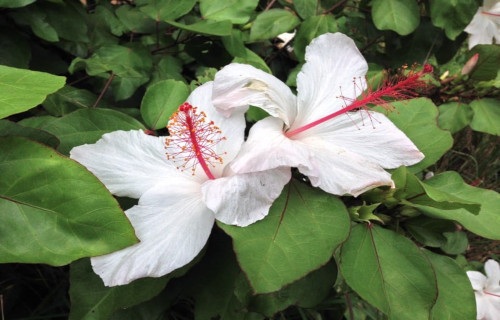
CCL: http://bit.ly/2xQPH8p
Hawaaian White Hibiscus Distribution, Habitat, and Ecology
First of all, as its very name obviously suggests, the gorgeous Hawaiian White Hibiscus evolved as solely native to the region now known as Hawaii. However, even there it has a limited range, only appearing on the two islands of Oahu and Moloka’i.
Further, the plant also requires a highly specific habitat in which to thrive. Unfortunately, this only serves to compound its precarious position. In its native range, this consists of the very wet forest regions in the mountain areas of these two islands.
But, three distinct subspecies of this beautiful plant, each physically quite similar, also exist. To begin with, one of these subspecies grows only in the mountains of Oahu. It appears at elevations ranging between 390-2,500 ft (119-762 m).
Another of these subspecies typically prefers only altitudes ranging between 650-2,200 ft (198-670 m). The third subspecies, like the Hawaiian White Hibiscus itself, also remains extremely rare. It grows only in a few valleys on the island of Moloka’i.
Turbinicarpus alonsoi
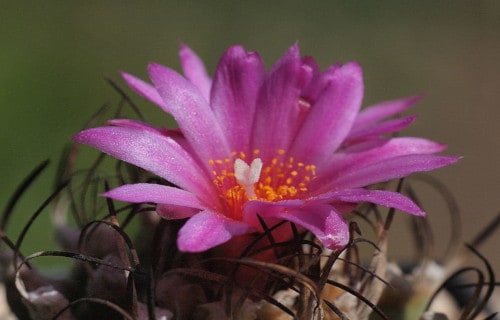
CCL: https://bit.ly/1jxQJMa
Turbinicarpus alonsoi Facts
- In the fourth spot on this list of 6 Extremely Rare Herbaceous Plants is the surprising Turbinicarpus alonsoi.
- Perhaps most notably, the truly amazing plant variety remains one of those species that has no common name. However, this does not negate the fact that this fabulous succulent constitutes an extremely fascinating plant.
- But, quite sadly, the marvelous species of succulent now faces the very real possibility of extinction. This lamentable possibility occurs due to a combination of numerous factors, not all of which are environmental in nature.
- Firstly, the current natural habitat of the species continues to be severely restricted. As a result, the danger of every current threat becomes compounded. Secondly, climate change and illegal collecting also pose dire threats to it.
- Further, due to these many factors, the IUCN, justifiably, currently lists the Turbinicarpus alonsoi as Critically Endangered. Finally, current estimates place the number of mature specimens existing in the wild at fewer than 5,000.
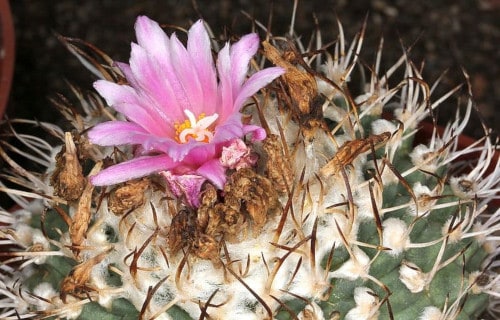
CCL: https://bit.ly/1E6HPMf
Turbinicarpus alonsoi
It must be pointed out that the marvelous Turbinicarpus alonsoi does not distinguish itself based on size. In fact, it ranks as a small specimen. Furthermore, unlike some related species, this comparatively tiny plant evolved a highly flattened spherical shape.
Plus, the rounded stem of the succulent does not grow to a large size. In fact, this part of the plant attains a diameter of 2.4 – 2.75 in (6 – 7 cm). The elongated section of this interesting cactus stays small as well. Typically, it reaches a total length of about 4.3 in (11 cm).
But, the ribs of the plant arrange themselves into an incredible pattern. These develop as a multitude of tubercules. Additionally, these usually reach a length equaling about 0.6 in (15 mm). But, in width these same structures average 0.5 in (13 mm) at the base.
The majority of this species develops tucked away below the surface of the earth. As a result, the taproot of the cactus needs to grow to a great length. Finally, the numerous flowers produced by the Turbinicarpus alonsoi generally develop as a deep pink in color.
- Kingdom: Plantae
- Phylum: Angiosperms
- Class: Eudicots
- Order: Caryophyllales
- Family: Cactaceae
- Genus: Turbinicarpus
- Species: T. alonsoi
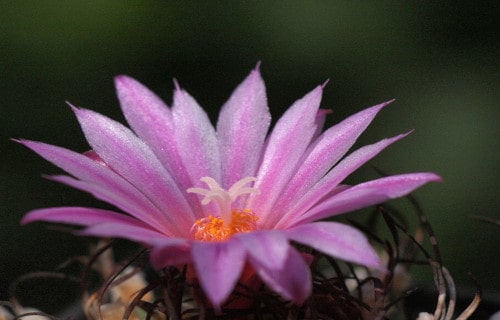
CCL: https://bit.ly/1ryPA8o
Turbinicarpus alonsoi Distribution, Habitat, and Ecology
Sadly, the Turbinicarpus alonsoi only inhabits a tiny section of the world. To be more precise, this limited area of habitation consists only of a section of Xichu, Mexico, in North America. Further, its entire known range actually only consists of a total of 3.86 sq mi (10 sq km).
It also has highly specific habitat requirements. This situation only further increases its vulnerability. Firstly, this wonderful cactus only grows in regions of highly arid scrub. Secondly, though, the succulent also requires the soil in such spots to be high in chalk content.
But, the environmental needs of the Turbinicarpus alonsoi do not end there. It also only appears at an approximately specific elevation above sea level. This altitude consists of heights at or around 6,234 ft (1,900 m). As a result, its options remain severely limited.
The species also has a particular period of the year in which it blooms. This time frame occurs between March and October. Plus, its elongated fruit develops as quite small, at about 0.2 – 0.4 in (5 – 10 mm). Finally, the numerous seeds also remain extremely tiny.
Gibraltar Campion
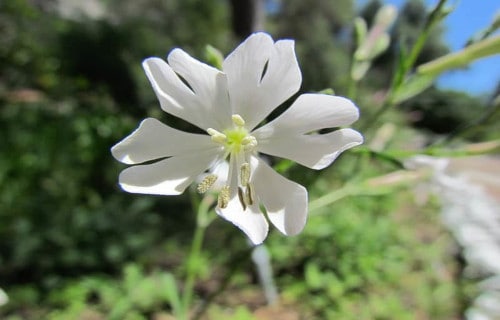
CCL: https://bit.ly/1p2b8Ke
Gibraltar Campion Facts
- Placing in the fifth spot within this compendium of 6 Extremely Rare Herbaceous Plants is the gorgeous Gibraltar Campion.
- First, this delicate, yet gorgeous plant holds a special notoriety. The marvelous flower has a true story to tell. That’s true since, among other things, this stunning work of Nature currently ranks as one of the rarest of all known plants.
- The species also goes by the less pronounceable scientific name of Silene tomentosa. Regardless of its name, one thing stands out. In fact, this marvelous little beauty remains so rare that, by the year 1992, experts believed it to be extinct.
- However, later, in 1994, a most fortuitous, at least for botanists and those who appreciate Nature, event occurred. That’s because, at that time, researchers accidentally rediscovered the remarkable species still living in the wild.
- But, the truly gorgeous Gibraltar Campion nevertheless remains exceedingly rare in its natural habitat. Thankfully for the species, however, as well as those who appreciate Nature, botanists succeeded in propagating a few specimens.
- As a result of their painstaking efforts, these now exist at the Gibraltar Botanic Gardens. This magnificent variety of flora presently, and quite understandably, holds an official status as an Endangered Species. This appears on the IUCN Red List.
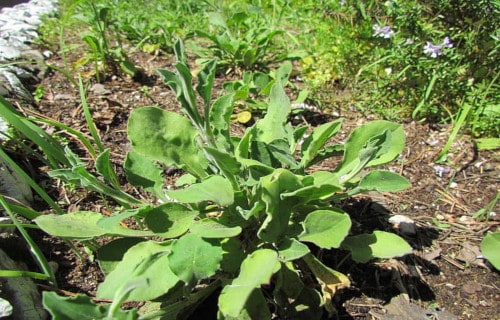
CCL: https://bit.ly/1p2b8Ke
Gibraltar Campion Physical Description
The Gibraltar Campion classifies as a woody-based perennial plant. This occurs due to its genetic structure, which may surprise some amateur researchers. Yet, the flower holds this status despite the fact that the marvelous species strongly resembles a small flower.
It also remains relatively small in terms of physical size. In this manner, it proves that plants can be impressive in appearance, regardless of size. Plus, the plant attains a maximum height of about 16 in (40 cm). But, the majority of individuals remain much smaller than this.
Also, the small, two-lobed flowers of the Gibraltar Campion merit appreciation. These commonly present a variety of colors to dazzle the eye. These delicate blooms range from a very pale pink to a pale violet in color. As a result, the effect can be quite striking.
- Kingdom: Plantae
- Phylum: Angiosperms
- Class: Eudicots
- Order: Caryophyllales
- Family: Caryophyllaceae
- Genus: Silene
- Species: S. tomentosa

CCL: https://bit.ly/1p2b8Ke
Gibraltar Campion Distribution, Habitat, and Ecology
Firstly, the common name of the Gibraltar Campion tells one where to find it. This delicate little beauty lives in only one highly restricted location in the world. That extremely limited range consists of only Gibraltar Rock, located in the United Kingdom, in Europe.
Even there it surprises researchers. This plant also has a highly restricted, specific, and unexpected habitat preference for where it lives. Due to this, the breathtaking flowering plant lives only on the extremely rocky, otherwise desolate, outcrops of Gibraltar Rock itself.
Sadly, scientists still know very little about the ecology of this variety of flora. This lack understandably occurs due to the simple fact of having so few specimens to study. However, efforts to fathom the secrets of the magnificent Gibraltar Campion remain ongoing.
Thankfully for the few remaining wild specimens, it now has a measure of legal protection. The local government passed the Nature Protection Act in 1991. This measure serves to provide the perilously positioned plant with at least a modicum of legal protection.
Nevin’s Barberry
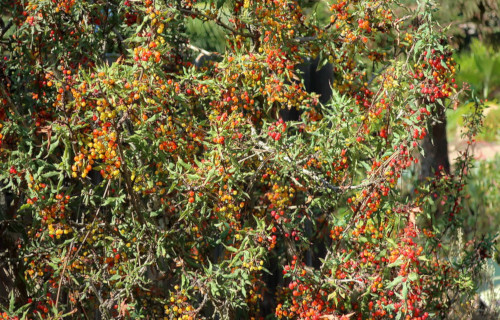
CCL: https://bit.ly/1ryPA8o
Nevin’s Barberry Facts
- The final entry into this article about 6 Extremely Rare Herbaceous Plants is the incredible Nevin’s Barberry.
- Most notably, the fabulous species represents a truly visually striking shrub. Sadly, this distinctive looking plant also ranks as one of the rarest types of shrub in the world.
- Currently, the plant commonly grows in commercial nurseries, in many parts of North America. However, and quite sadly, in the wild it remains extremely rare.
- Furthermore, only 21 known, naturally occurring populations of Nevin’s Barberry still exist in the wild. But, the sad part of its story does not simply end there, though that would be enough.
- Yet another factors makes its continued existence in the wild even more precarious. That factor is the fact that many of these populations consist of fewer than five individual plants.
- Finally, at last count, only 250 known individual plants remain in the wild. Due to these factors, the IUCN currently list the species as Critically Endangered.
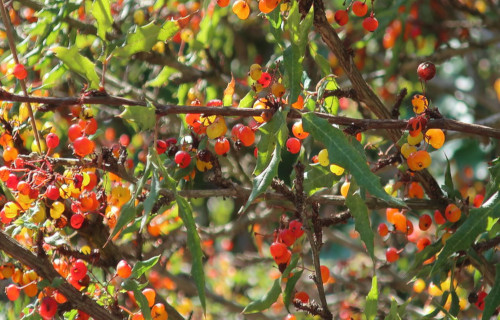
CCL: https://bit.ly/1ryPA8o
Nevin’s Barberry Physical Description
First of all, the Nevin’s Barberry forms a moderately large species of shrub. That’s because individual plants attain a size of as much as 13 ft (4 m) in height. Most specimens, however, do not quite attain that size in the wild.
Further, the rather impressive species evolved as an evergreen, with firm, spiny-toothed leaflets. In addition, it also produces these leaflets in extremely thickly interwoven groupings.
Also, its distinctive foliage principally displays as a dark green in color. Meanwhile, the flowers the plant produces develop as bright yellow racemes. Additionally, much like the leaflets, these appear in thick layers.
Further, the fruit of the Nevin’s Barberry develops as a small, bright red berry, which it also produces in large numbers. Its berries appear in late summer and serve as a favorite food of local bird populations.
- Kingdom: Plantae
- Phylum: Angiosperms
- Class: Eudicots
- Order: Ranunculales
- Family: Berberidaceae
- Genus: Mahonia
- Species: M. nevinii
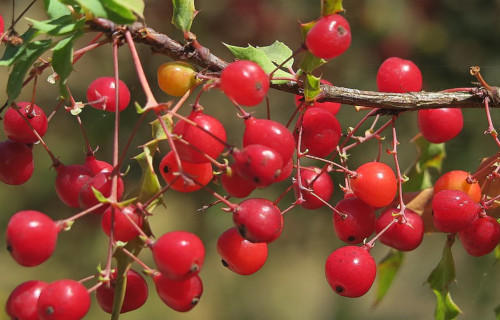
CCL: https://bit.ly/1ryPA8o
Nevin’s Barberry Distribution, Habitat, and Ecology
Firstly, the Nevin’s Barberry grows endemically in only a small area of southern California, in the United States. Furthermore, within this range, within only two counties, it only exists in harsh habitat types.
The various topographical conditions it inhabits include chaparral, flat sandy washes, rocky canyons, mountain terraces, and summits. Also, the majority of its remaining endemic territory lies within the San Gabriel Mountains.
Given the scarcity of its numbers, as well as its extremely scant numbers, it faces serious danger. In fact, the greatest threats to the continued presence of the Nevin’s Barberry in the wild remains habitat loss. However, climate change now plays a role as well.
Finally, this appears especially true, given a disturbing fact. That holds true because many of the remaining populations occur on privately owned land. These, therefore, remain subject to potential urban development.
6 Extremely Rare Herbaceous Plants
We sincerely hope that you have greatly enjoyed this article we have created for you, about 6 Extremely Rare Herbaceous Plants. Quite sadly, however, many more species also qualify as rare, around the world. And that list continues to grow.
Each of them has their natural role to play in their local ecosystems, thus proving their value. It remains up to each of us to do all that we can to protect and preserve these 6 Extremely Rare Herbaceous Plants, and the countless others, for our posterity.
Check out our other articles on Sensational Christmas Namesakes of the World, Astounding Lizards of the World, 6 Startling Marine Slugs, 4 Geological Wonders of Canada
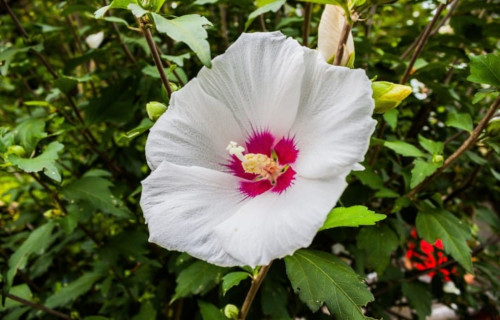
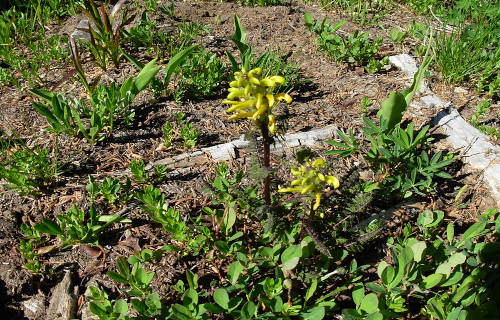
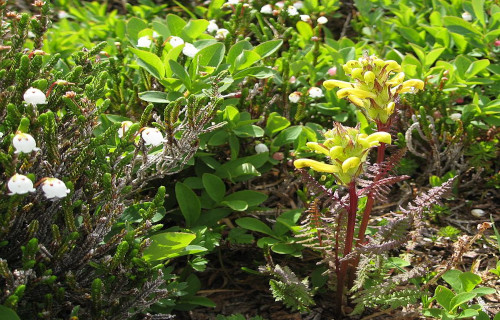
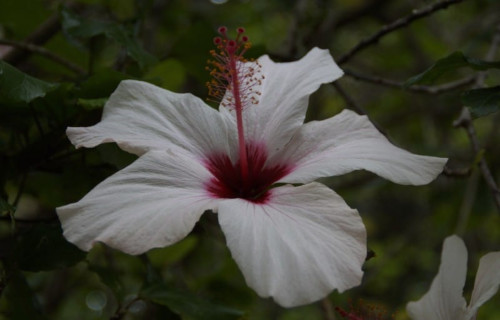









Leave a Reply